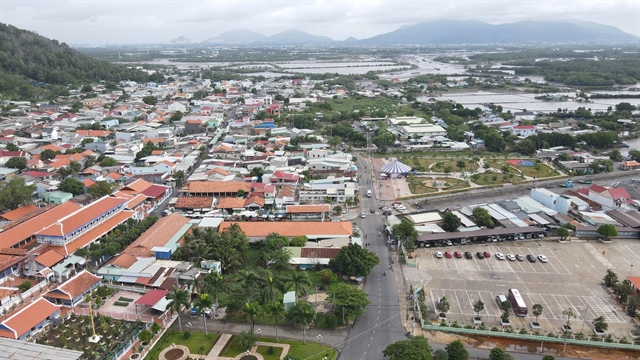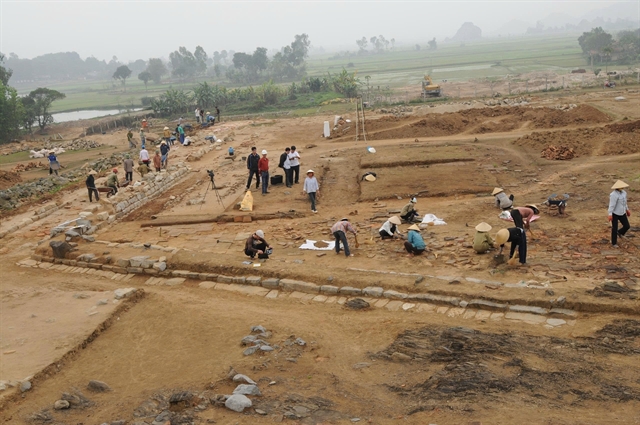 Opinion
Opinion

The Office Chief of the National Traffic Safety Committee, Nguyễn Trọng Thái, talks to Hải quan (Customs) newspaper about measures to reduce speeding, one of the key traffic accident causes.
 |
| Nguyễn Trọng Thái |
The Office Chief of the National Traffic Safety Committee, Nguyễn Trọng Thái, talks to Hải quan (Customs) newspaper about measures to reduce speeding, one of the key traffic accident causes.
Traffic accidents in the first quarter of this year decreased in comparison with the same period last year, but many serious ones occurred recently, including one in the Central Highlands that killed 13 people earlier this month. What are the main reasons?
Traffic safety, in general, was ensured in the first quarter of 2017 with the number of accidents and traffic congestion reduced in comparison with the same period last year. But many especially serious traffic accidents happened recently across the country on both road, rail and water ways, causing great damage in terms of both property and human lives.
Serious railway accidents were attributed to violations by road users and shortcomings in railway infrastructure, such as illegal crossings that pose high risks for traffic accidents.
Meanwhile, many serious road traffic accidents involved coaches, trucks, and motorbikes. For example, the recent accident in the Central Highlands province of Gia Lai killed 13 people and injured 30 others. According to initial investigation by local police, the accident happened because the truck driver was driving on the wrong side of the road at 105km per hour.
The case is still under further investigation. The results should be publicised to raise public awareness and prevent similar accidents, and to serve as a basis to strictly punish drivers violating the law.
We have applied many measures to control and handle violations relating to speeding. Why does this violation not decrease?
While analysing causes of traffic accidents in general and serious traffic accidents in particular, we found that the key reason was drivers’ violations of traffic regulations, including speeding.
According to analysis by the Traffic Police Department, speeding violations accounts for 10 per cent of the total number of traffic accidents and the rate tends to increase.
At present, speeding is discovered by authorised forces via a camera system and speed detection devices, and the administrative punishment for speeding violations is very high.
Besides, buses, coaches and trucks were ordered to equip their vehicles with black boxes to supervise their operation, including speed, helping authorised forces and transport business better manage the operation of these vehicles.
However, speeding violations tend to increase for many reasons. It is partly due to low awareness of many drivers. Speeding violations also result from vehicles trying to compete with others to take passengers.
Also, a number of drivers have not yet acknowledged changes regulating speed and distance between vehicles that took effect in 2015.
Apart from new regulations on speed, drivers should also slow down when crossing some high-risk areas, such as residential neighborhoods and slopes, or when bypassing and overtaking other vehicles.
So I think it is necessary to strengthen information dissemination on this issue.
The World Health Organisation in Việt Nam has proposed reducing the permitted speed limit in inner cities from 60km per hour to 50km per hour to reduce traffic accidents. What do you think?
Regarding the WHO proposal, I think Circular 91of the transport ministry has clear regulations on speed limits for vehicles, based on road transport infrastructure conditions and traffic situations in Việt Nam as well as research and reference of speed limit of some countries in the region. As a result, the regulation is quite suitable and helps to promote efficiency of investment in transport infrastructure.
In reality, we can install signals to ask drivers to reduce speed in areas prone to traffic accidents.
Therefore, the organisation of traffic should be made in line with reality.
In the coming time, it is necessary to enhance information dissemination to raise public awareness of regulations on speed and increase supervision, inspection and punishment of speeding violations.
Speed signals must also be upgraded to help drivers easily recognise and abide by regulations.
It remains a challenge to reduce traffic accidents sustainably. What do you think are measures needed to fulfil this target?
We set a target to reduce the number of accidents by five per cent in 2017. The National Traffic Safety Committee mapped out seven groups of measures to reduce traffic accidents in 2017 as well as in its five-year programme, including completing legal documents to improve State management effectiveness in this issue.
Other measures include continuing to invest in developing transport infrastructure, particularly road systems, national highways and rural roads; regular road maintenance to ensure road safety and tackle hotspots of traffic accidents; and restructuring the development of other transport systems, such as railways and waterways to reduce pressure on the road system.
Increasing supervision and inspection, strictly punishing violators of traffic regulations, together with enhancing traffic safety education and information dissemination are the solutions. — VNS




